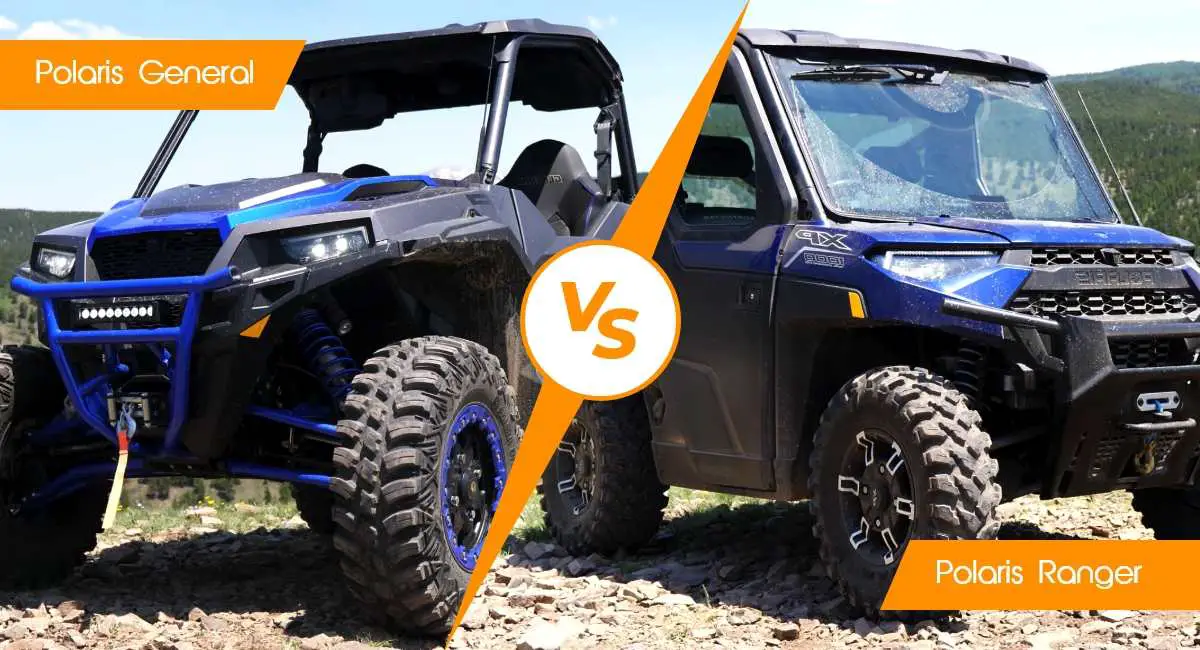Throughout its production period, Polaris Ranger 900 XP has continued to impress both new and old customers. Polaris maintains that the Ranger 900 XP is one of the industry’s best-selling utility vehicles, and has a massive client base to back up that.
The Ranger 900 XP keeps on enhancing its styling and offers plenty of premium features too. Owners can enjoy 68 horsepower from its 875c twin-cylinder engine, plus it provides sufficient ground clearance, especially when mudding.
But even with all these positive remarks, we cannot overlook the fact that this model has encountered issues for a long time. With that in mind, let’s discuss some of the common problems that you could experience with the Ranger 900 XP as well as the required repairs.
But before that, here are important Polaris Ranger 900 XP specifications;
| Engine | Engine – Type4-Stroke Twin Cylinder DOHC Cylinder Displacement – 875cc Cooling – Liquid Horsepower – 68 HP Fuel System – Electronic Fuel Injection |
| Drivetrain | Transmission – Automatic PVT H/L/N/R/P |
| Dimensions | L x W x H – 116.5 x 60 x 76 in. Payload Capacity – 1,500 lbs. Fuel Capacity – 10 gal Ground Clearance – 11.5 in. Wheelbase – 81 in. Seating Capacity – 3 |
| Brakes(Front/Rear) Parking Brakes | 4-Wheel Hydraulic Disc with Dual-Bore Front Calipers Park in Transmission |
| Wheels/ Tires | Wheel – Stamped Steel Front Tires – 25 x 10 -12; 489 Rear Tires – 25 x 11-12; 489 |
| Suspension | Front suspension – Dual A-Arm 10 in. Travel Rear suspension – Dual A-Arm, IRS 10 in. Travel |
| Other Specifications | Cargo System – Lock and Ride Hitch Type – Standard 2 in. Tilt Steering – Standard Lighting – 55W low/ 60W high, LED Tail |
Key Features and Benefits
Reliable engine: The Ranger 900 XP boasts one of the most powerful engines in the industry. The twin-cylinder design allows it to provide enough power for off road enthusiasts while improving the ride quality. And although the horsepower is a bit on the lower side, it is still sufficient for a wide variety of activities around the home.
Unmatched comfort: The Ranger 900 XP’s interior speaks of comfort at its best. Furthermore, the seat layout and height help ensure that the vehicle is easily accessible. Similarly, the wide foot clearance facilitates effortless entrance and exit.
Dependable suspension: This utility vehicle uses an extremely reliable suspension which allows it to navigate on both uneven and slippery surfaces. The Dual A-Arm front and rear suspension deliver up to 10 inches of travel which helps the driver remain in control of the machine while riding on technical terrains.
Convenient 2WD/4WD switch button: The Ranger 900 XP includes an on-demand switch that allows your vehicle to switch between an all-wheel drive system and 2WD, depending on your driving needs. Once activated, this feature allows you to engage a 4WD whenever more traction is required. Similarly, it automatically reverts to a 2WD when reversing.
Responsive power steering: Most Polaris riders affirm that this utility vehicle provides one of the smoothest and most receptive power steering. This makes it easy to steer the vehicle, especially under heavy loads, and it also offers better maneuverability on rocky terrains.

Polaris Ranger 900 XP Problems
1. Difficulty shifting
One of the most common challenges faced by Ranger XP 900 is difficulty in shifting from one gear to another. Most users, especially old customers, have reported that it is sometimes almost impossible to engage the shifter unless the vehicle is turned off.
In addition, some users are forced to turn the engine off when shifting from the parking gear to low/high or even the reverse gear. Failure to do so, the vehicle risks jumping or jerking hard. Often, shifting issues originate from a shifter mechanism used. Polaris Ranger 900 XP clutch problems can also be caused by a faulty drive belt, a misaligned clutch, or even a loose or damaged engine mount.
To solve shifting issues, you can start by adjusting your gear selector lever. If the selector is adjusted properly, then selecting gear should be trouble-free. You may also need to replace the entire selector assembly to fix the problem permanently.
If this does not help solve the problem, you can attempt to troubleshoot the transmission to see if there is any issue with the linkage. Generally, a Polaris Ranger 900 XP shift linkage adjustment will help prevent further damage while ensuring that you don’t have to spend a lot on repairs.
2. Fuel injector issues
A malfunctioning fuel injector is not always easy to diagnose, but there are a few telltale signs that you can always look out for. Some of the symptoms of a faulty fuel injector include starting problems, increased fuel consumption, poor engine performance, air pollution, etc.
In most cases, low fuel pressure and fuel contaminations are the common culprits of most injector problems. If you determine that low pressure is behind the problem, you try and solve the issue by replacing the fuel pump or regulator to help increase the pressure.
You may also need to clean the injector if it is clogged to optimize fuel delivery. Unfortunately, if the fuel injector is completely damaged, no amount of cleaning or repair will make it operational. In that case, you don’t have any other choice but to replace it.
3. Belt problems
Any hard-ridden motor can generate water or moisture inside the belt housing, which can give rise to a host of belt problems. Belt slippage is a common problem, and it often appears after riding on a lot of snow, washing the vehicle, or cruising through water crossings.
In some cases, it can be a symptom of serious damage to the transmission, and expensive repairs may be needed to fix the problem. Basically, once the friction between the belt and clutch is compromised, it renders the whole transmission pretty useless until the problem is solved.
Apart from slippage, reduced performance is also a sign of a faulty UTV belt. Often, drying the intake housing helps to prevent the problem, but in some cases, a belt replacement is the ultimate solution. In addition, responsible riding and regular maintenance will help prevent the problem from recurring while guaranteeing you many years of service.
4. Overheating issues
The Ranger 900 XP is built to be exceptionally durable, but the heat generated by the motor can make it run above normal operating temperatures. Overheating is a predominant issue, and it can cause serious engine problems that can leave you stuck on the trail. Luckily, overheating problems are easy to troubleshoot.
Overheating will not only cause permanent damage to the engine but can also compromise the performance of other components that keeps the engine running. There are several factors that can make your engine overheat, such as a clogged radiator, low coolant level, and a dirty engine exterior.
Once you have identified the root cause, you’ll need to take the necessary steps to help solve the problem. For instance, cleaning and repairing a faulty radiator should help keep your engine components from overheating.
Another way to prevent your vehicle from overheating is to make sure that your machine has an adequate amount of coolant. Ensure to check the coolant level regularly and get a refill whenever necessary. If the radiator and coolant are functioning properly, but the problem persists, visit your local Polaris dealer for a proper diagnosis.
5. Turf mode issues
Problems arising from Turf mode have been a topic for discussion on most Polaris Ranger forums. Riding on Turf mode helps to prevent tire damage on smooth surfaces, but it can sometimes be hectic to operate. For instance, if your UTV is involved in hard riding or often pushed to the limit, the Turf mode often becomes a liability.
Turf mode issues are often attributed to careless driving, but the damage it causes is hard to ignore. In addition, activating the Turf mode while your wheels are spinning can make you run into trouble, so it is important to take precautions to avoid further damage. Another reason that can cause Turf mode issues is using monster tires. Ideally, these tires add more weight to the four-wheeler, and this can make the Turf mode to explode.
To prevent these issues, it is always a good idea to avoid using your UTV in a way that will put stress on the Turf mode. You may also want to avoid using larger-than-standard tire sizes and abusing your machine’s Turf mode, especially when riding in high traction environments.
6. Polaris Ranger 900 XP recall
In 2015, Polaris recalled all Polaris Ranger 900 XP in the market when it established that the heat shield posed a burning hazard to the operator. The company feared that if the heat shield fell off, it could potentially cause fire thereby posing a danger to the rider.
Luckily, no injuries we reported, but it proved to be a worthwhile precautionary measure. To avert the impending danger, Polaris invested heavily in improving the design of the shield, and the result was impeccable. Consequently, this fear was eradicated in all preceding Ranger 900 XP models.
Parting Shot!
We hope you have learned everything you needed to know about the Ranger 900 XP’s probable problems and how you can fix them. The Polaris Ranger 900 XP is undoubtedly a powerful machine, but it comes with several complaints that can create concern. From numerous overheating problems to occasional belt slippage, you’ll need to keep all these issues in mind before you choose this model.




